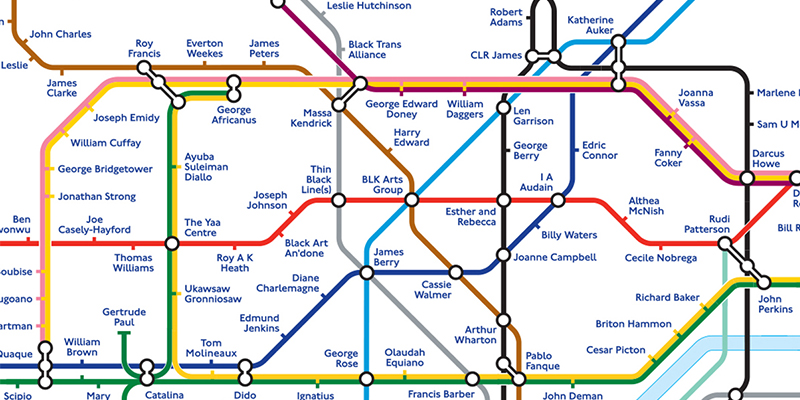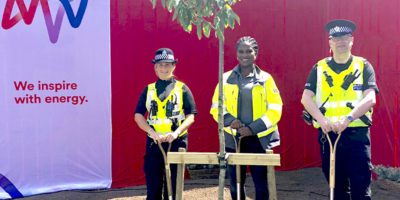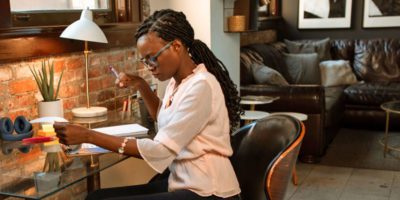Marcia Williams is TfL’s director of diversity, inclusion and talent, having joined TfL in July 2021 with a wealth of experience of over 25 years in equality and diversity roles, most recently from her time at Thames Tideway. Marcia leads TfL’s Diversity and Inclusion and Talent functions, where she is responsible for the Diversity and Inclusion strategy, principles and practices which are delivered across the respective businesses, acknowledging the differing needs and business plans in each area. Marcia is also responsible for implementing a TfL-wide talent strategy, organisational development and talent acquisition and creating a diverse workforce with a culture of high performance to meet current and future needs.
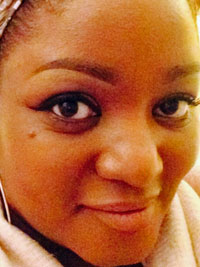
“Once people appreciate that Black History is not just the history of Black people, it is British History, it is our shared history, then I think that helps people understand and challenge some of the racism that many people experience.”
Broad horizons
I actually went to a girls’ school. I do think it was really great to give us an environment as young women to expand our thinking, to see the world as a place of lots of opportunities, and not feel constrained, and all those really good things. So, I’ve been really lucky that I had that experience.
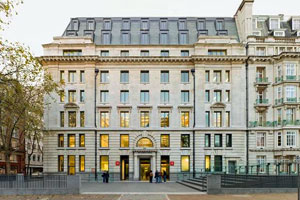
I went to the London School of Economics and I read law there. Even at that point, although I didn’t realise what I was doing would end up doing as a career, I was probably sensing my need for something that had a bit more purpose and a bit more social value to it.
I remember going to a university open day, at the RAF Museum at Hendon. I’d never been there before so it was fascinating. They started to ask questions about what we might do at uni, and where we might want to study.
Considering contribution and purpose
I remember a really influential academic law lecturer talking about the importance of going to a law school that wasn’t just going to turn out people to work in law firms, but that was actually going to produce people that would question the world around them, and think about contribution and purpose.
I was really lucky that I studied in that environment because it meant I could look at subjects that really meant something to me. It was one of the first times that we studied, for example, the law around transitioning and gender reassignment.
On a university degree course, we examined the role of BAME people in the criminal justice system, for example, so I think, again, there were all sorts of little clues around, but I really hadn’t connected the dots of work out that I would end up doing the role that I am in now.
After university, I was a law lecturer for a while. I also worked with various other legal professional bodies, and quite a few years into that career, I decided to do training for the bar. It’s a really useful skillset around opinion writing, writing for influence, and advocacy.
Shaping diversity and inclusion in the legal sector
I worked at The Law Society when it was still both a combined representation and regulation body. It was a really fascinating grounding in all areas of the law. We were organised into specialisms that were facing the profession.
I did a lot of work on the Equal Treatment Directive, which many years later would become the Equality Act 2010. I looked after several special interest groups that were very new, the African Caribbean and Asian Lawyers Group, the Young Solicitors Group, Solicitors with Disabilities. There was a whole cluster of really strong emerging talent coming together, looking to find a place for themselves in the profession.
It’s interesting because my job was located in the communications department. This was at a time when we were just coming out of another major recession and actually the profession was facing lots of challenges around particularly women partners who would be made redundant whilst they were pregnant or on maternity leave. It really exposed me to some awful, awful sexism and misogyny.
Looking back it was really interesting that the initial response adopted was one of engaging on anti-discrimination issues via the communications function. In the early days ‘Equal Opportunities’ work was often co-located in public affairs, communications or CSR functions, and not necessarily HR.
This was before mobile phones, and the climate was such that I recall people calling me from a phonebook that sits behind the Royal Courts of Justice, where my office used to be at the back of the Law Society, to tell me what their concerns were. They felt that if they came into the building, somebody might see them and realise what they were raising.
So, the climate around inclusion was wholly different. One of the things we did at that point in time was to design and then disseminate the first set of anti-discrimination rules, with a code and commentary for the profession, which is now in the regulatory kit. I’m very proud of the work we did.
I received some interesting correspondence in response from various people across the country, arguing against having lots of practical guidance and a code in place. They felt it was a real intrusion into their ability to make partners of whoever they wanted to choose to go into business with. Thankfully we’ve come a really long way since those days.
After I left, I went to the Treasury. I’m just really lucky at that point in time, when the Regulations Amendment Act came into force, as this was the very first-time public bodies had public sector duties around race and had to think about how they were going to deliver their function and their purpose with a lens that was around race equality, promoting equity and avoiding discrimination.
Diversifying film
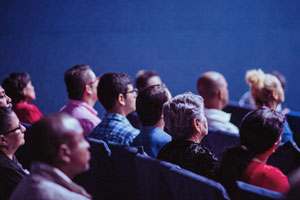
I produced the very first diversity and inclusion strategy for the British film industry. I think it was there that I found my sweet spot, which was working with talent. I created several high-end talent programmes to develop particularly underrepresented talent. For example, I created a scheme called Breakthrough Brits, which is used to support emerging talent.
There’s a whole bunch of people that have come through that scheme (now run by BAFTA), winning Oscars and BAFTAs and the like so it’s good to know those kinds of practices are proving to be fruitful in the industry today. Another big focus of the work that we did with that talent was making sure that film production really did take on board the need to connect equity and greater diversity with receiving public money from the National Lottery to Finance their films.
When I left the UK Film Council, I went were freelance, working with a variety of clients, often working with public bodies and regulators. I also had a role as a non-executive director with the Broadcast Equality and Training Regulator. It was really interesting that this was under the aegis of Ofcom.
The role there was to work with all the licensees, so radio stations, cable and satellite companies, to have them focus on equality and inclusion, and improve their track record on that.
We did some really interesting work to identify how we could get monitoring going across the sector, how we could improve, increasing the capacity for leading on diversity among the different companies and looking at their approach to learning and skills. Again, I hadn’t really realised it, but that combination of learning and skills and diversity was something that would crop up again in my career.
So, most recently before my role at Transport for London (TfL) I was head of development and inclusivity on the Thames Tideway project, which is a £1.2 billion project to clean up and restore the natural habitats, and reconnect them with people in London.
That sector is not really known for being particularly diverse. 12% of engineers in the UK are women. On the Thames Tideway project, we were named as one of The Times Top 50 Employers, for Women, but we also managed to achieve 36% women working on that project in delivery roles on site. Even within our central operations, we were 66 to 63% women. Our general counsel was a woman. Our treasurer was female. It was incredible to have so many really strong women in senior roles.
Day to day at TfL
Day to day I’m usually in my office at home, answering emails, making phone calls and that kind of thing. At the moment, my priorities are about understanding where we can make the most impact. With the brief that we’ve got, our job is to help deliver the Mayor’s Transport Strategy for London. He’s really clear about the vital importance of inclusion and diversity.
One of the early priorities was around bringing together the business through our teams to produce a new set of equality objectives to be published. It’s about understanding what our purpose is in relation to giving greater inclusion, a real sense of inclusion for people.
I think there are many barriers to travel, for example in the context of disability. I would love for disabled people using the network to be able to travel with spontaneity and independence, the freedom that a lot of people take for granted.
Similarly, in relation to the workforce, I want to create an environment where people can literally come as they are, and they know they’re in a safe space. It is vital that we develop leaders to recognise and appreciate that.
TfL gives the opportunity to support a fantastic integrated transport network, but also to make a real difference to Londoners’ lives, and the experience of London for those who don’t live here.
My first few weeks have been about mapping it out, getting a feel for where we can make the most impact. I’ve been getting to know partners getting to know my team and my directorate, another part of which includes skills and employment, which is about our agenda for creating apprenticeship and employability programmes, and graduate schemes.
And another aspect of it is around organisation development and leadership. This year we launched a talent new philosophy and lots of elements within that to help people to drive their own careers and to own their development. There are lots of really complimentary things going on at the moment, it’s about making those different parts work together to have the best impact.
Black History Tube Map
Today, we’re down at the Black Cultural Archives (BCA) with the Deputy Mayor, Heidi Alexander, and we’ve been launching a new Black History Tube Map, which is fantastic. It’s an amazing resource that the BCA and the historian, Kelly Foster, put together to map out all 272 stations, which have been renamed with people from Black History, from Roman times right up to the present day.
Internally, there’s also quite a lot of programming going on, both locally within the different business areas across TfL, but also corporately for Black History Month. There are lots of really interesting talks. We’ve had the author Leroy Logan, former superintendent at the Metropolitan Police, come to talk about his book. We will do a session next week about Taking the Knee.
It’s a really, cool programme with lots of activities around our allyship, history and the cultural stuff as well. So it’s a really rich programme that people can dip into to immerse themselves over the coming month.
Importance of celebrating Black History Month
It’s really important to mark Black History Month. Hate crime figures bear this out. There is a lot of ignorance, there is a lot of misunderstanding. It’s really important that people, everybody, not just Black people, understand the contribution of Black people to the UK, and London as its capital.
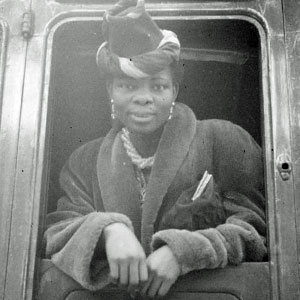
The history map identifies that there have been Black people in the UK, since Roman times, but that story hasn’t always been told. And it’s really important.
I’d like to think that Londoners will understand that Black History isn’t just about Black people, but it’s actually the history of all of us. Once people appreciate that Black History is not just the history of Black people, it is British History, it is our shared history, then I think that helps people understand and challenge some of the racism that many people experience.
Hopefully, the Tube map will be a talking point and encourage people that don’t know it so well to research some of the names, find out their stories and get a different take on London.
Coming up
What I’m really excited about is that we’re working now to pull together a narrative version of our Action on Inclusion strategy. For me, it’s really important when we produce it that it reflects everything we’ve learned and experienced over the last 18 months.
It’s important that when you pick that document up to read it, and you understand it as a celebration of all the wonderful diversity London has to offer but also as a clear statement of intent about the work we all need to do to help London recover from the pandemic and rebuild in a way that is authentically inclusive, sustainable and strong.
https://www.linkedin.com/in/marcia-williams-03139a3a/
https://www.facebook.com/transportforlondon
London School of Economics image credit: English Wikipedia user Mulloom2, GFDL <http://www.gnu.org/copyleft/fdl.html>, via Wikimedia Commons

